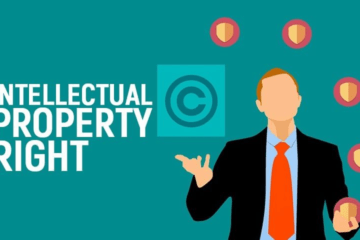
This article is written by Vani Khandelwal of 3rd Semester of Symbiosis Law School, Nagpur
ABSTRACT
This article deals with authorship and ownership status in India. The article starts with what an author means and all the key conditions mentioned under 13(2) of the Copyright Act, 1957. Section 17 of the act addresses the acquisition of copyright ownership. Further Sections 17(a), 17(b), 17(c), 17(cc), 17(d) and 17(dd) are defined and briefly explained. It also clearly defines an author under the Copyright Act, 1957. Development of Copyright laws have also been explained in the article. A few case laws have been discussed in the same. Lastly, the article ends with assignment of copyright and a conclusion to the article.
KEYWORDS: Author, Ownership, Copyright, Act, Laws, Development
INTRODUCTION
Even if someone else came up with the overall concept, the work must still be written, compiled, composed, and/or illustrated by the author. Because the person who had the great original idea did not also produce the work, they did not have the copyright to it, which led to the creation of the idea of an author. The Copyright Act of 1957 does not principally base an author’s claim to a copyright on that author’s country. However, the Copyright Act of 1957’s Section 13 (2) outlines a number of crucial requirements that must be completed before copyright can be established.[1]
The following are the key conditions under Section 13(2) of the Copyright Act of 1957:
- PUBLISHED WORK: The work must have been published in India, or if it was published elsewhere, the author of the work had to have been an Indian citizen at the time of publication, if they were alive, or at the time of their death, if they had already passed away.
- UNPUBLISHED WORK: As stated in Section 7 of the Copyright Act of 1957, the author of the work should be regarded as a citizen of, or domiciled in, the country of which he or she was a citizen, or wherein he or she was domiciled for any substantial part of that time period. Architecture-related works are not included in the unpublished work.
- ARCHITECTURAL WORK: The Copyright Act,1957, which governs copyright in India, will only protect an author’s architectural work if it is located in India.[2]
Section 17 of the Copyright Act of 1957 addresses the acquisition of copyright ownership. The Ownership right is only available to persons who meet the provisions of the Copyright Act of 1957. Under other Indian laws, there is no alternative appropriate recourse for ownership of copyright offences.
The first owner of the copyright is defined as the creator of the work in Section 17 of the Copyright Act of 1957. The Copyright Act, 1957 defines the term “author” separately in order to distinguish between “ownership” and “authorship” of copyright in India.[3]
If an author creates any literary, dramatic, or artistic work while employed by or performing services for the owner under a contract of service or traineeship for the owner of a magazine, newspaper, or similar periodical, the owner of such publication will be the first owner of the Copy, in accordance with Section 17(a) of the Copyright Act of 1957, absent any prior agreement to the contrary.[4]
The restriction is applied when the work is published in a magazine, newspaper, etc., or when a duplicate of the work is used for such publishing. In any other circumstance, however, the author shall be acknowledged as the rightful owner of the copyright.
The individual who provided the valuable consideration will be the first owner of the Copyright, as stated in Section 17(b) of the Copyright Act of 1957, in cases where a painting or portrait is created, a photograph is taken, an engraving is made, or a cinematographic film is produced at the request of any such person. This is true notwithstanding any prior agreements to the contrary.
If someone carries out any of the aforementioned actions while employed by or rendering services to the owner of a newspaper, magazine, or comparable periodical pursuant to a service agreement or traineeship with the intention of publishing the work in a newspaper, magazine, or any such periodical, etc., without any prior agreement to the contrary, the owner of the magazine, newspaper, etc., will be the first owner of the Copyright.[5]
According to Section 17 (c)[1] of the Copyright Act of 1957, the employer or proprietor (other than the proprietor or owner of a magazine, newspaper, or similar periodical) is the first owner of the Copyright if a work is produced by an author while they are employed under a contract of service or traineeship, absent a prior agreement to the contrary.[6]
In situations where the speech or address was given in public, Section 17(cc) of the Copyright Act of 1957 states that the person who delivered the speech or address will be the initial owner of the copyright. The original owner of the copyright will be the person who spoke or gave an address on behalf of another person. Whoever organizes the speech or address, possesses the original copyright, or has control over the location where the speech or address is delivered does not affect the application of the same standards.
In the case of Nicols v. Pitman, [1884][7], it was decided that students were not allowed to publish the lecture notes they had attended.
According to Section 17(d) of the Copyright Act of 1957, unless there is a prior agreement to the contrary, the government will be the initial owner of the copyright in any government work.
In accordance with Section 17(dd) of the Copyright Act of 1957, a public undertaking will be the first owner of Copyright whenever a work is created or first published under the supervision or direction of a public undertaking, unless an agreement to the contrary is in place.
The concerned international organisations will be the first owners of the copyright when any work of an international organisation is made, according to Sections 17(dd) and 41 of the Copyright Act, 1957.
WHO IS AN AUTHOR UNDER COPYRIGHT ACT?
The Indian copyright law distinguishes between authorship and copyright ownership. The person who actually employs their imagination, creativity, and intellectual faculties to write, compose, or produce the work is the author. Even if a copyrighted work was not produced under the author’s supervision or while they were working for another company, they may still be its owner.
A copyrighted work’s ownership may vary based on the events that led to its development, but since the author was compensated for their contributions to the work, the author will always be given credit as the work’s creator. The broad principle that the author is the original owner of a copyright was established by the Copyright Act of 1957. The exceptions to this provision are outlined in Section 17 of the statute, which also defines the difference between authorship and copyright ownership.
WHO IS AN OWNER UNDER INDIAN COPYRIGHT ACT?
Even while the creator may also be the owner if the work was produced in exchange for money or as part of a job, the person who oversaw its development retains ownership of it.
| Section 17[8] | Subject matter |
| Clause (a) | Literary, dramatic & artistic work |
| Clause (b) | Photograph, painting, engraving, cinematographic film |
| Clause (c) | Work made under course of employment |
| Clause (cc) | Lectures delivered in public in behalf of another |
| Clause (d) | Work assigned by government |
| Clause (dd) | Work made on behalf of a public undertaking |
| Clause (dd) | Work of certain international organization |
EVOLUTION OF COPYRIGHT LAWS IN INDIA
- Initial phase: The earliest copyright statute was created in 1911 while Britain was still in power. The Berne convention’s guidelines were observed. The government may issue a compulsory licence to publish a book during that time period, and the copyright term was for the author’s lifetime as well as seven years after his death. In 1914, it became required to register as well.
- Modern phase: Modern copyright legislation was also known as the Copyright Act of 1911, which was revised once again in 1914. A criminal penalty for copyright infringement was included to the law for the first time. After the date of the first publication, the copyright’s fixed term of ten years began. Up until the Copyright statute of 1957 took its place, this statute was still in effect.
- 1957 phase: Following the country’s independence from British domination, the Act was passed. The laws governing intellectual property were originally passed at that time. The 21st of January 1958 saw its implementation. The Berne agreement of protection of literary and artistic work, 1886, adopted the majority of the law’s provisions.
The Berne Convention, UCC, and TRIPs Agreement are just a few of the international treaties that have had this legislation revised six times so far to keep up with society’s swift developments.[9]
ASSINGMENT OF COPYRIGHT
The owner of the copyright can make money by using it and by giving it to others in exchange for reciprocal benefits. Copyright licencing and assignment are two ways to accomplish this.
Any copyrighted work, whether it is currently in existence or not, may only be assigned in whole or in part by the copyright owner. Upon such assignment, the assignee acquires all copyright-related rights to the assigned work and is regarded as the copyright owner with regard to those rights.[10]
CONCLUSION
It is accepted that India has separate laws governing ownership and authorship. Although ownership of any work the author has previously produced may not always remain in their hands, they will always be recognised as the original creator. However, if the parties come to a different understanding while working together, the ownership may be changed in accordance with that understanding. Section 17 lists the exceptions to the general rule that the author is the first owner.
The concepts of copyright “ownership” and “authorship” are employed in India in two different ways. Every concept of ownership and authorship that involves copyright in India attracts its own special rights. Sometimes the owner and creator of a copyright are the same person, meaning that both parties are the owners of the copyright. Sometimes the author and the copyright holder are different people. The original owner of a work’s copyright is its creator. If an author is employed by a business where ownership rights are specifically retained in their employment contract, their right is restricted.[11]
[1] Ownership and Authorship of Copyright in India; Ownership and Authorship of Copyright in India – Corpbiz
[2] Ownership and Authorship of Copyright in India; Ownership and Authorship of Copyright in India – Corpbiz
[3] Ownership and Authorship of Copyright; Ownership and Authorship of Copyright in India – Corpbiz
[4] Ownership and Authorship of Copyright; Ownership and Authorship of Copyright in India – Corpbiz
[5] Ownership and Authorship of Copyright; Ownership and Authorship of Copyright in India – Corpbiz
[6] Ownership and Authorship of Copyright; Ownership and Authorship of Copyright in India – Corpbiz
[7] Nicols v. Pitman, [1884] 26 Ch D 374
[8] Indian Copyright Act, with case laws; [Law Notes] Indian Copyrights Act, 1957 with Case Laws| IPR by Anubha Mathur (mylawman.co.in)
[9] Indian Copyright Act, with case laws; [Law Notes] Indian Copyrights Act, 1957 with Case Laws| IPR by Anubha Mathur (mylawman.co.in)
[10] Copyright Act,1957 Ipleaders; Copyright Act, 1957 – iPleaders
[11] Authorship & Ownership of Copyright in India | Intellect Vidhya




0 Comments